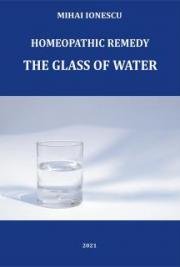
Selecting the Right
Journal

According to an estimate, more than 70,000 research journals exist,
growing at a rate of about 3.5% per year. More than 1,000 new
journals were launched in 2014 alone. These numbers can make
journal selection a daunting task. However, you can get help from
various online tools to narrow down your search for the appropriate
journal.
Find the Right Journal
One of the first steps in choosing the right journal is to know its scope and aim. This information is usually available on the journal’s
website. It will also help you find the kind of articles the journal is
interested in publishing. You can also read some of the articles the
journal has published. Is there any similarity between those articles
and your own manuscript? If not, it might not be the right journal for
you.
You can also get information from your literature review. Look for
journals, wherein the papers you cited have been published. It is
likely that those journals may also be interested in your work. This
approach can be helpful when journal’s scope does not give you
enough details to decide whether that journal would be the right fit
for your manuscript.
You should also consider how long a journal takes to publish articles.
With some journals, there can be a considerable delay between
submission and publication. Your choice of the journal can also
depend on the type of the audience you want to reach out. Based on
your requirements, you may also look for a journal with broad scope,
wider target audience and an online presence.
Selecting the Right Journal
Chew (1991) surveyed manuscripts rejected by the American
Journal of Roentgenology (AJR) to investigate whether, when, and
where they had been published. The results showed that 82% of
the major papers and 70% of the case reports that were
submitted to AJR during the study period were eventually
published elsewhere (Radiology, Clinical Nuclear Medicine, etc.)
or even in AJR within 18 months of being rejected. This directly
tells us that selecting the right journal is a very important factor in
the publication process.
We know that publication of research in peer-reviewed journals
marks the last step in the scientific process. Through the process
of peer review and publication, a research study is validated,
disseminated, credited, and archived. Once published, a paper
and the information it contains can be indexed, retrieved, cited,
and incorporated into the knowledge base. When a paper is
rejected, this process comes to a halt. Unless the paper can be
accepted for publication elsewhere, the work will be lost.

To choose a “suitable” journal is to select one that will maximize
your chances of publication.
Covered in this ebook are six easy steps to selecting the right
journal.
Step 1: List the Field of Study and Related Fields
The first step in selecting a journal is to consider as many fields
of study that pertain to the planned article.
Sample list for a Physics Researcher
Research Topic: Fabrication of carbon nanotubes
Subject 1: Nanotechnology
Subject 2: Materials Science
Subject 3: Applied Physics
Subject 4: Physical Chemistry
Subject 5: Biomedical Engineering
Strive to create a list of at least five fields of study that overlap
with the proposed manuscript’s content. Think broadly at this
stage; the journal choices can be narrowed at a later time.
Step 2: Find Journals Related to Those Fields
Once you have listed the fields of study that overlap with the
manuscript’s content, consult online resources, a university
librarian, and/or professionals in the fields and determine
journals that are published in each field. The reference list from
your thesis may also provide clues to journals that publish in
these topic areas. At this point you should also consider the
stated purpose of the journal. For purposes of illustration, four
broad categories of journals are suggested based on the target
audience:
General or all-purpose journals contain elements of
important social, political, and economic issues. They are
usually designed for a broad audience and not limited to a
specialty.
Review journals contain the current state of knowledge or
practice in a particular field. They provide background
information to those who want an overview on the current
status in a field.
Research journals are predominantly devoted to reporting
original investigations, including research in the basic
sciences. They are usually read by specialists in a field.
Clinical or practice journals have as their dominant
purpose documenting the state of current practice. This is
done through the publication of case reports, discussions,
commentaries, etc.




Sample list for a Physics Researcher
General or all-purpose journals: Nature, Science
Review journals: Review of Modern Physics, Applied Physics
Reviews
Research journals: Nano Letters, Advanced Materials
Tip 1!
Concentrate your search on journals with online editions. They
naturally have a wider
audience.
Here are some helpful online resources to get you started:
http://scientific.thomson.com/
http://highwire.stanford.edu/
http://www.ncbi.nlm.nih.gov/
By now you would have listed around 10 or 15 journals. Based
on online research and advice from librarians or colleagues, list
some of the major characteristics and competitive factors of
each of these journals.
Content and Coverage : Scientific journals publish
numerous types of articles, including original articles,
review articles, letters to the editor, editorials, news
reports, commentaries, brief/short communications, and
case reports. The research article is the most common
type of article published in medical journals. Journals
reporting original research are more likely to contain
unique contributions to the coverage of a field and
therefore are selected more often than those containing
only case reports.

Readership : International peer-reviewed journals attract a
wider readership than regional journals. English is the
universal language of science. It is clear that the journals
most important to the international research community
will publish only in English. This is especially true for
natural sciences. Most regional journals have now started
to publish abstracts in English.
Publication Lag Time and Frequency of Publication :
Different journals have different lag times for acceptance
(from the date of submission) and publication (from
acceptance to print). This depends on the format of the
submission as well as the frequency of publication. For
example, Rapid Communications are published quicker
than Original or Review Articles. The frequency of a journal
can be weekly, monthly, quarterly, etc. The publication lag
time for monthly journals is usually obviously lesser than
that for a quarterly journal. However, the popularity of the
journal (the number of articles waiting to be published)
also plays a role here).
Impact Factor : The quality of most journals is judged by an
index called Impact Factor. A high impact factor indicates
that papers published in the journal are frequently cited in
the same or other journals. Impact factor is a good
indicator for popularity and quality of research. But be
careful; this index is only meaningful in the context of
journals in the same general discipline. For example,
smaller fields like Crystallography do not generate as many
articles or citations as do larger fields such as
Biotechnology or Genetics.
None of the above journal characteristics are necessarily good
or bad. The importance of the above information lies in
matching your manuscript optimally to the goals and
characteristics of the journal.

Evaluate Suitability to Your Research
We will now taper the list of potential journals by comparing
their characteristics to those of the existing or hypothesized
work product. This is a multi-step process.
To begin, consider the ultimate goal in publishing the manuscript.
Some examples of goals are:
To influence clinicians’ behavior: You can focus on journals
with clinicians as the audience. As clinicians are busy
people, you should write a short article.
To report details of a very specialized topic: You should
focus on very specialized journals with specific circulation,
albeit a smaller audience.
To introduce an audience to a topic that people would not
normally think or care about: Think about journals with a
readership interested in the general topic of the
manuscript (e.g., assessment) but who knows little about
the focal topic (e.g., assessment of deaf children)
To get something into print that is worthwhile but not
particularly sophisticated or influential, rather than never
publish it at all: A less competitive journal may be a wise
choice in this situation.
Once you have got your goal in place, write down your desired
characteristics, noting in each case whether a given journal on
the list seems to be advantageous, disadvantageous, or neutral.
This process should narrow down the list of journals by at least
half.

Review the “Instructions to Authors”
The next step toward final journal selection is to locate each of
the journal’s “Instructions to Authors” document. Most journals
will have this document on their website. Some publish this in
each issue, others only once per year. Study that page for
additional information that can further narrow the list of
journal options. The instructions page may contain lists of
topics that are welcomed or discouraged and information on
page limits. This is a good page to find out about the different
types of manuscripts the journal publishes (e.g., some journals
do not publish book reviews).
Tip 2!
It is always better to first choose the journal before you write
the article. But in case you have done it the other way around,
pay attention to details like the length of the manuscript,
number of figures/tables allowed, etc.
Final choice
By now, you have all the information you need to make a
decision. If the final choice is not yet obvious, it may be helpful
to contact the journal editor to discuss the nature of the
intended submission and whether or not the editor thinks it is
appropriate for the publication. Editors are proud of their
journals, and in some sense, are like talent scouts, in that they
are always on the lookout for appropriate, quality submissions,
especially from new authors. Most will give generously of their
time and advice or guide in this matter.
Send the editor a brief email describing the following the
essential features of the proposed manuscript and ask if the
journal would be an appropriate one for a submission. This
letter is different from a cover letter that you need to submit
when a manuscript is being submitted. Some important points
to include in this letter are:
Title of Manuscript
Type of Article
Target audience
Estimated number of words
Brief summary (single paragraph)

After a final decision has been made on the most appropriate
journal for submission, you are not ready to start writing your
manuscript. Ensure that the manuscript conforms to the
characteristics, style, and preferences of the chosen journal.
Also, follow exactly the instructions given to potential authors.
Before submission, don’t forget to edit your manuscript!
Quick Tips for Journal Selection
Make a List of the Journals Available
It is essential to obtain reasonably comprehensive knowledge about
available journals in the given subject area. Consulting your peers,
searching through online listings, and checking with professional
associations can help us get a list of the journals.
Determine the Impact of the Journal
Quantitative measures such as the Impact Factor, Journal Rank,
Article Influence, and h-Index are used to determine the impact of
the journal. These are generally linked to the citation rate for articles
published in the journal; however, these values and the absolute
numbers of citations can both be scrutinized.
Make Sure the Journal Scope and Policies match your Needs
The subject areas covered and the types of articles published should
be ascertained. This will contribute towards addressing the suitable
target audience. Further, you should go through the editorial policies
and practices of the journal. This would help to anticipate any
situations that may emerge during the submission and peer review
process.
Check the Journal Requirements and Distribution
Most journals have a certain style for the article. The article must be consistent with the requirements of the journal. The mode of
distribution (print/online) and number of subscribers determine the
reach of the journal. For open access, where the content is available to all, having an estimate of the typical number of readers helps. This
would mean that your article would reach that many number of
people.
Collect Information about the Journal’s Peer Review Process
Information about the peer review process for the specific journal, including stature of reviewers, objectivity, and timelines, should also
be gleaned from a variety of sources. Actual values or estimates of
rejection rates should be obtained.
Check the “Instructions for Authors” thoroughly
The “Instruction for Authors” has certain additional information for
the authors that one must keep in mind before submitting the
manuscript. For example, topics that are welcome, discouraged, page
limit etc. may be mentioned here, that are important for the authors.
Therefore, this list must be thoroughly checked.
Now that you have gone through the checklist, you can make
the selection of the best possible journal for your manuscript. So get going!
References:
1. Chew, F., Fate of AJR Rejected Manuscripts. American
Journal of Roentgenology 156: 627, March 1991
2. Garfield, E., How ISI Selects Journals for Coverage:
Quantitative and Qualitative Considerations. Current
Contents, May 1990


















